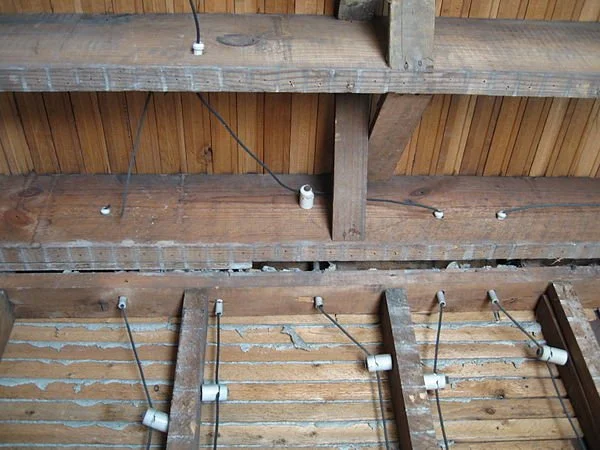What is Knob and Tube Electrical Wiring?
When searching for a new home, it's essential to consider your next home's electrical system. One type of wiring that often comes up in older homes is knob and tube wiring. Once a popular electrical system, knob and tube wiring has some limitations and potential safety concerns that homebuyers should be aware of. This month, we will delve into the basics of knob and tube wiring, its advantages and disadvantages, and what to consider if you encounter it in a prospective home.
Understanding Knob and Tube Wiring
Knob and tube wiring was commonly used in North American homes between the late 1800s and early 1900s, and it continued to be installed until the 1940s. This system relies on porcelain knobs and tubes to run electrical wires through walls and ceilings. Copper conductors are routed through the porcelain tubes, ensuring they are not in direct contact with any building materials.
Advantages of Knob and Tube Wiring
Durability: Despite its age, knob and tube wiring is known for its durability. When installed correctly, the porcelain knobs and tubes provide a protective barrier that helps prevent electrical fires.
Ampacity: Knob and tube wiring can handle a decent electrical load. Its design allows for good heat dissipation, reducing the risk of overheating compared to some modern electrical systems.
No grounding: Surprisingly, the absence of a grounding conductor can be considered an advantage in certain cases. Since older homes lack modern appliances that require a grounded electrical system, knob and tube wiring can still effectively meet the needs of the household.
Disadvantages and Safety Concerns
Insulation degradation: Over time, the rubberized cloth insulation surrounding the wiring can deteriorate. This can lead to exposed wires, increasing the risk of electrical shorts, shocks, or fires. Furthermore, the insulation is not designed to withstand the demands of modern electrical usage, such as air conditioners, which could pose safety hazards.
Inadequate capacity: Knob and tube wiring systems were not designed to support the electrical needs of today's households. With the rise of numerous power-hungry appliances and electronics, the system may be overloaded, leading to tripped circuits or potential fire hazards.
Lack of grounding: While the absence of a grounding conductor was listed as an advantage, it's important to note that this can be a significant drawback when it comes to electrical safety. Grounding provides protection from electric shocks and helps divert excess electrical currents.
Considerations When Purchasing a Home with Knob and Tube
If you're considering purchasing a home with knob and tube wiring, there are several factors to bear in mind:
Insurance implications: Some insurance companies may have policies regarding knob and tube wiring. Before finalizing your purchase, consult with insurance providers to ensure coverage and understand any potential premium adjustments or requirements for upgrading the electrical system.
Evaluation by a qualified electrician: Have the knob and tube wiring system thoroughly inspected by a licensed electrician. They will be able to assess its condition, identify any potential safety concerns, and provide recommendations for any necessary upgrades or replacements.
Cost considerations: Upgrading an electrical system can be a significant investment. Take into account the cost of rewiring the home when considering the overall budget for your home purchase.
Knob and tube wiring, while once widely used, has its limitations and safety concerns. If you come across this type of wiring in a prospective home, it is important to evaluate its condition, consider the potential risks, and consult with licensed professionals for expert advice.
